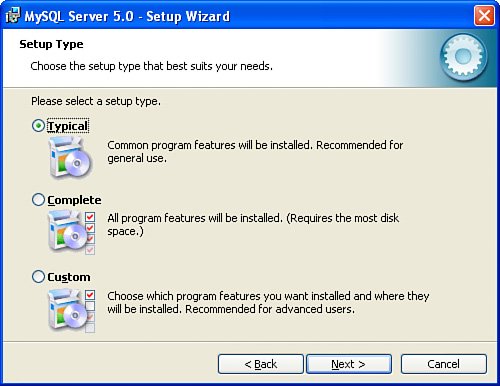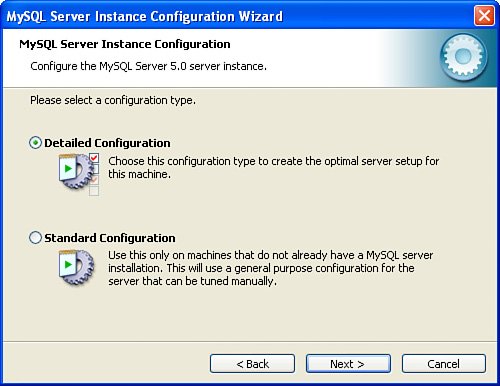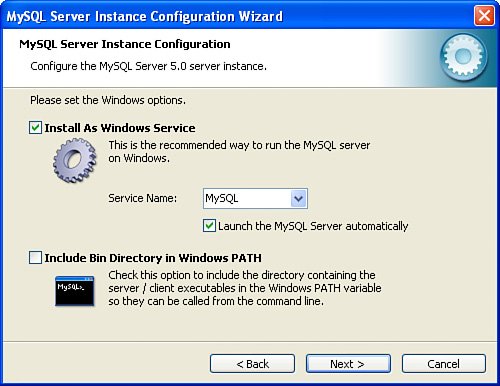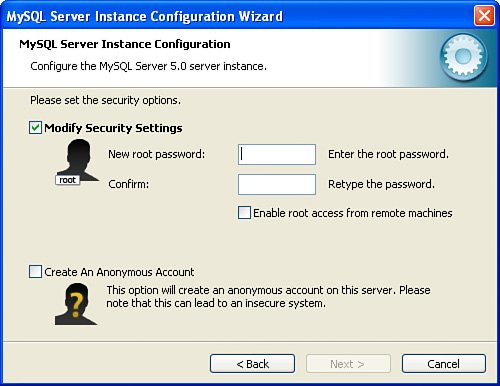Windows Installation
| Two different Windows installer programs are available for MySQL: the full distribution and a version called Windows Essentials that includes only the most popular features; Windows Essentials is about half the size of the full package. The Windows Essentials distribution, covered here, is suitable for most users. First, download the latest version of the installer. The filename of the latest version at the time of this writing is mysql-essetials-5.0.18-win32.msi. Save this file to your desktop. Double-click the installer icon to initiate the Setup Wizard. Click the Next button to advance to a screen like the one shown in Figure A.1. Figure A.1. The MySQL Setup Wizard. Unless you have a specific reason to customize the installation, the default selection of Typical is fine. Click Next to continue. The next screen confirms the location to which MySQL will be installed. Click the Install button to begin installation. It might take a few minutes for the MySQL installer to copy files. The next window asks you to sign up for a MySQL.com account if you do not already have one. If you already have an account, enter your email address and password in the boxes. You can select Skip Sign-Up to skip this step, if you want. Click Next to continue. Installation is now complete. You will see a window like the one shown in Figure A.2. Figure A.2. After completing the MySQL Setup Wizard. Click the Finish button to begin configuring the MySQL Server and launch the Configuration Wizard. Click Next; you will see the configuration type selection shown in Figure A.3. Figure A.3. MySQL Server Instance Configuration Wizard. Unless you have a specific need to change the installation settings, you can choose the option that requires the fewest decisions. Select Standard Configuration and click Next. The window shown in Figure A.4 enables you to install MySQL as a Windows service. This option is checked by default, and it's the easiest way to get the MySQL server running. Figure A.4. Selecting whether to install MySQL as a Windows service. If you check the box in the lower half of this window, the location of the MySQL programs is added to your Windows PATH variable. This enables you to invoke client programs from any system location without having to enter their full path. The next window, shown in Figure A.5, requires you to set a new password for the root user. Figure A.5. Security settings when configuring MySQL.
Enter a new password and confirm it by entering it a second time. Then click Next. The Configuration Wizard is ready to perform the configuration. Click the Execute button to continue. MySQL installation is now complete. You will find a new program group called MySQL on your start menu; it contains a link to the configuration wizard in case you need to change any of the settings. There is also a link to the mysql command-line monitor. To start and stop the MySQL service, select Control Panel, then Administrative Tools, and then Services. You can start, stop, pause, and restart the service from the Services manager. |
EAN: 2147483647
Pages: 165





